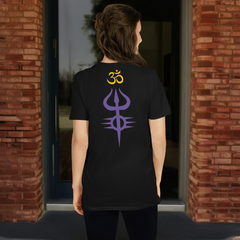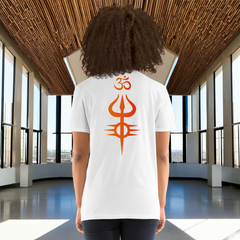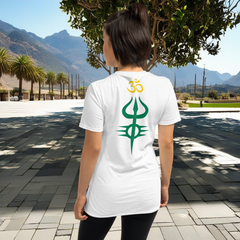What is Shiva in Judaism: Understanding the Jewish Funeral Custom
Posted by Massimiliano Geraci

In the wake of loss, many find themselves searching for ways to honor and remember their loved ones. The Jewish tradition offers a deeply meaningful process through shiva, a period of mourning that helps families and friends come together in grief and support.
Shiva stands as a cornerstone in Jewish funeral customs, guiding the bereaved through their sorrow with time-honored practices.
Shiva is a Hebrew word meaning "seven," reflecting the seven days immediately following burial during which mourners focus on remembering the deceased. This article sheds light on this significant Jewish custom, exploring its origins, rituals, and the solace it brings to those grieving.
From understanding what it means to sit shiva to observing proper etiquette at a shiva house, readers will gain insight into how this practice aids in healing after death. Discover how community plays a crucial role at shiva candle in offering strength during these seven days of reflection.
Keep reading for an empathetic journey into the core of Jewish mourning traditions.
What is the meaning of shiva?
Shiva symbolizes the Jewish mourning period dedicated to reflecting on the life and loss of a loved plaque by family members. This term, derived from the Hebrew word meaning "seven," indicates its duration—seven days—and underscores its significance in Judaism as a time for communal support and remembrance.
Observing shiva allows mourners to express their grief within a framework that honors the deceased while facilitating a structured return to daily life.
During this seven-day period, customs such as sitting on low stools signify an individual's state of mourning, reciting prayers helps comfort bereaved souls, and covering mirrors in the house encourages introspection rather than vanity.
These practices serve not just as expressions of sorrow but also affirmations of faith and resilience in the face of loss.
The observance of shiva reflects Judaism's deep understanding of grief's complexity, offering solace to those who mourn.
Following this exploration into shiva’s core elements shines light on how individuals sit, observe shiva, and reach out with compassion throughout this sacred time.

What does shiva mean in judaism?
In Judaism, the word shiva symbolizes the seven-day mourning period that commences immediately after the burial of a loved one. This Hebrew word meaning "seven" embodies a profound ritual where families sit low to the ground, reflecting their deep sorrow and bringing themselves closer to the earth.
It signifies a time when immediate family members gather to mourn, pray, and remember the soul of the deceased. The practice is an expression of grief but also serves as a communal support system.
The customs during shiva involve lighting a shiva candle that burns throughout the seven days and nights, signifying the constant presence of spiritual light in times of darkness. Visitors pay shiva calls at this time, entering the house of mourning to offer their condolences, which reinforces community bonds and provides comfort.
Traditional Jewish law dictates these practices not just as formalities but as essential elements aiding in coping with loss. Observing shiva allows families to pause, honor their loved ones in accordance with Jewish funeral traditions, and start working through their journey of bereavement underlined by hope and solidarity within their community.
Why is the period of shiva important in jewish mourning?
The period of shiva holds profound significance in Jewish mourning as it frames a time for intense bereavement and reflection following the loss of a loved one. Marking seven days of mourning, this practice brings immediate family members together to honor their deceased relative in the privacy and comfort of the home once they return from the cemetery.
During this sacred week, traditions facilitate communal support and consolation, making grief more bearable. Observers sit on low stools as a symbol of their sorrow, embodying the weightiness of their emotional state.
Throughout these seven days and seven nights, customs such as reciting prayers provide both structure and solace to those immersed in sadness. The shiva minyan encourages communal participation, ensuring that mourners are not left to navigate their pain alone.
This gathering for a prayer service strengthens bonds within the community while emphasizing collective responsibility toward those grieving. Essential rituals like covering mirrors redirect attention inward, fostering introspection about life's fragility and impermanence.
Shiva crucially allows individuals to confront their loss directly within a supportive environment, marking an important step in Judaism's compassionate approach to healing after death.
How long does shiva last?
Shiva, a cornerstone of Jewish mourning practices, traditionally lasts for seven days. This period begins immediately after returning from the cemetery, signifying a week of deep reflection and communal support for the bereaved family.
During these days following the burial, families observe shiva by engaging in various customs meant to honor the deceased and facilitate grief processing among those closest to them.
Families sit lower than usual as a physical manifestation of their sorrow, while visitors bring meals known as “the meal of condolence,” highlighting the community's role in supporting those in mourning.
"Shiva week ends with a walk outside the shiva house by the most immediate family member; this act symbolizes re-entering life after a week of intense mourning. The practice emphasizes both personal loss and communal resilience and care during times of sorrow.
How do you sit shiva?
Sitting shiva marks a death occurs a critical juncture in the Jewish mourning process, embodying both bereavement and communal support. This period grants the immediate family of the deceased time to reflect, grieve, and begin healing, surrounded by loved ones and community members who share in their sorrow.
1. Shiva begins immediately after the burial, signifying an intense seven-day period where mourners withdraw from daily life to focus on their loss.
2 .The immediate family of the deceased typically stays home during this time, allowing friends, family, and community members to visit and offer condolences.
3. Customary practices include covering mirrors in the shiva home; this act symbolizes a shift away from self-awareness and vanity towards introspection.
4. Mourners traditionally sit on low stools or boxes during the shiva period, representing their lowered state in the depths of grief.
5. It is customary for visitors to bring food to the shiva house since cooking is considered an inappropriate activity for mourners deeply engrossed in their grief.
6. A pitcher of water is placed outside the front door for visitors to wash their hands upon leaving, a symbolic gesture of cleansing oneself from the presence of death.
7. Reciting prayers such as Kaddish occurs daily within a minyan, a quorum of ten adult Jews; this reaffirms faith in God amidst profound loss.
8. Worn clothing signifies a break from concerns about physical appearances and underscores mourning's pure emotional essence.
9. The bereaved abstain from work-related activities, emphasizing personal reflection and community over external obligations during these seven days.
10. The seventh day of shiva ends with a short walk around the block with family members if possible; this act serves as a first step back into the broader world beyond one’s immediate grief.
This structured approach provides mourners with focused time for bereavement supported by clear cultural guidelines and communal support systems that have been cherished throughout generations within Judaism.

What does it mean to sit shiva?
To sit shiva signifies entering a profound seven-day period of mourning recognized within the Jewish tradition. This time allows those closest to the deceased, traditionally immediate family members, to pause their daily routines and come together in solemn remembrance and reflection.
Mourning practices are grounded in centuries-old customs, including covering mirrors in the home, sitting on low stools or the floor as a sign of humility and sorrow, and receiving visitors who come to offer condolences.
This practice is more than an act of grief but a structured framework provided by Judaism to cope with loss. Engaging in shiva involves embracing rituals that honor the deceased's memory while fostering communal support for the bereaved.
Acts such as reciting prayers together with guests highlight both individual sorrow and collective solace. The culmination of these traditions serves as a spiritual bridge from deep loss towards gradual healing.
Shiva stands as a testament to the value Judaism places on community during times of mourning.
In lightening this burden of human being shared by close kin, we next explore specific customs involved during shiva.
What are the customs involved when you sit shiva?
Sitting shiva involves a week-long period of mourning recognized by the Jewish community, started immediately after the burial. This practice allows those close to the deceased to come together in the home of the deceased, reflecting on their loss and beginning their journey through grief.
The customs dictate covering mirrors in the house, symbolizing a shift away from self-awareness toward introspection. During this time, mourners refrain from participating in joyful activities such as wearing makeup or shaving, emphasizing sorrow and respect for the departed.
Throughout shiva week, family members traditionally sit on low stools or on the floor as a sign of their bereavement. Visitors are encouraged to bring meals known as "the meal of condolence," providing comfort and support without expecting anything in return.
Lighting a yahrzeit candle that burns continuously for seven days serves as a powerful emblem of remembrance. Reciting prayers together with those paying a shiva call helps honor the memory of those who have passed while reinforcing bonds within the Jewish holidays cycle and marking significance during moments like Rosh Hashanah or Yom Kippur if they occur during this solemn time.
What happens at a shiva house?
At a shiva house, family members gather for a seven-day period known as "sitting shiva" to honor the deceased. This Jewish mourning practice involves rituals designed to comfort the bereaved and reflect on the life of their loved one.
Mirrors are covered, symbolizing a shift from self-awareness to introspection about the departed. The mourners sit on low stools or the floor, manifesting their grief and humility in light of their loss.
Visitors bring meals of condolence, adhering to the tradition known as the "meal of consolation," provided by friends or community members rather than by those sitting shiva themselves.
Prayers recite daily, particularly Shacharit in the first morning service and Mincha in the evening, facilitating communal support and spiritual solace for those mourning. It’s a time when anecdotes about the deceased are shared, contributing to both collective memory and individual healing processes while reinforcing bonds within the community during this solemn occasion.
What do you do when you attend a shiva?
Attending a shiva allows one to partake in a time-honored Jewish mourning practice, providing solace and support to the bereaved family member. It involves participating in rituals that underscore the themes of grief, reflection, and communal support inherent in Bereavement in Judaism.
1. Show respect by dressing modestly, acknowledging the solemnity of the occasion and honoring the customs that define sitting shiva etiquette.
2. Enter the shiva house quietly, recognizing this space as one dedicated to mourning and remembrance.
3. Offer condolences to the mourners directly, using heartfelt and simple expressions of sympathy to convey your support.
4. Participate in Jewish prayers if they are being recited, engaging with this key aspect of shiva customs which might include reciting Kaddish or other Hebrew language prayers designed to comfort the bereaved.
5. Bring food or contributions to a meal instead of flowers, adhering to the tradition known as “meal of condolence," helping alleviate practical concerns for the family during their time of mourning.
6. Avoid initiating conversations with mourners; wait for them to express their desire to talk as this respects their need for reflection or solitude during this period.
7. Engage respectfully with other attendees, sharing memories or stories about the deceased if appropriate, fostering a sense of community support for the mourner.
8. Observe silence when it seems suitable; sometimes your quiet presence offers more comfort than any words could handle.
9. Submit any donations you have brought for charity (tzedakah) in memory of the deceased, supporting causes important to them or their family as a meaningful way to honor their legacy.
10. Respect any customs specific to that shiva house which may vary according to familial or denominational practices within Judaism such as Shabbat observance rules if attending during this time.
Participating thoughtfully when you attend a shiva embodies compassion and respect, aligning with deep-rooted traditions that affirm life's continuity even in times of profound sorrow.
What is the proper etiquette when paying a shiva call?
Following the burial, paying a shiva call begins a sacred time for other mourners. This practice known as “sitting shiva” invites visitors into the home of the bereaved to provide comfort and share in their sorrow.
Upon arrival, it's customary to enter quietly, acknowledging that your presence offers more solace than any words could convey. The focus remains on allowing those in mourning to lead the conversation; they may seek to reminisce or simply sit in silence.
Actively participate by bringing something to ease the day of mourning – traditionally, this includes food or meals since preparing food is not a priority for those observing shiva.
It represents an act of kindness and support during these seven days after burial provided by funeral homes or personal gestures from friends and community members. Engage with empathy and respect, recognizing that this period is one of introspection and remembrance for the family.
What should you bring to a shiva?
During a shiva, it is customary to bring items that provide comfort and sustenance to the mourning family. Food often plays a central role, known as the "meal of consolation," symbolizing life's continuity in the face of loss.
This meal typically includes eggs or lentils, embodying the cycle of life with their round shape. Bringing prepared dishes or kosher food helps relieve the bereaved from daily tasks, allowing them time for reflection and sorrow (emotion).
Gifts such as books on healing or framed blessings can offer solace and encouragement during this challenging period. Some also choose to donate to a charity in honor even a friend of the deceased, reflecting a meaningful gesture that resonates with Jewish values.
It’s key not just to attend shiva but also to engage thoughtfully by considering what might best support those who grieve.
How should you offer condolence?
Transitioning from the logistics of what to do bring flowers to a shiva, one naturally progresses to understanding how condolences should be offered during this time of mourning. Expressing sympathy in a manner that acknowledges the profound sorrow and supports the healing journey is essential.
Voice your condolences with sincerity and brevity; simple phrases like “I’m sorry for your loss” carry weight. Sharing fond memories of the deceased can offer comfort, affirming their cherished presence in the lives they touched.
Listening plays a vital role as well. Often, mourners find solace in speaking about their loved one. By offering an attentive ear, you provide a space for memories and emotions to be expressed freely, which is invaluable during shiva—a period dedicated to reflection and remembrance within Judaism.
Your presence alone, without the pressure of finding perfect words, stands as a powerful testament to your support and respect for both the bereaved family and the sacredness of shiva itself.
How does shiva help the mourner?
Shiva serves as a profound period of mourning and reflection for those who have lost a loved one, providing them with the space and time necessary to begin the healing process. Through rituals known as the “meal of condolence” provided by the funeral home immediately after burial, mourners are gently guided back into everyday life.
Engaging in shiva allows individuals to honor their deceased loved ones by dedicating an entire week—the Hebrew word meaning “seven”—to remembrance and prayer. This time is crucial for processing grief with family and friends, ensuring no one endures their sorrow in isolation.
Community support plays an indispensable role during shiva, where customs foster a sense of solidarity among mourners. Visitors bring meals to ensure that those grieving do not have to worry about mundane tasks, allowing them to focus solely on working through their loss.
Shiva effectively brings people together, creating an environment where stories are shared, tears may freely flow, and comfort is extended through collective presence—demonstrating empathy and compassion in times of profound sadness.

What is the purpose of shiva?
The purpose of shiva serves as a structured period of mourning and reflection for the bereaved, guiding them through their grief with the support of community and tradition. This Jewish funeral custom lasts for seven days after the burial, creating a dedicated time for mourners to withdraw from the busyness of daily life, allowing them to fully engage in their loss.
During shiva, community members visit the mourner’s home to offer condolences certain prayers and support, embodying a profound sense of solidarity.
Engaging in shiva can help those who are grieving by providing an established framework within which they can express sadness, remember the deceased, and gradually adjust to their absence.
It is not about observing rituals; rather it embodies deep cultural and spiritual values that honor the memory of loved ones passed. The practices during these days—including prayers recited in funeral service itself—help mourners reconnect with their faith while receiving compassion from those around them.
Through this process, shiva facilitates healing by emphasizing remembrance over isolation, fostering an environment where sorrow can coexist with hope.
How does the shiva period aid in the healing process?
The shiva period offers a structured time for mourners to confront their loss surrounded by community and tradition. This Jewish practice allows individuals to process grief within the framework of spiritual rituals, emphasizing communal support and reflection.
Observing shiva paves the way for emotional healing by recognizing the importance of expressing sorrow openly, rather than sequestering it away from public view. Family members come together in a designated shiva house, often draped with symbols of mourning such as torn garments or covered mirrors, which serve as physical manifestations of their internal anguish.
This shared experience fosters a sense of unity and understanding among those grieving.
Engaging in specific customs during shiva—including reciting prayers like Kaddish—provides mourners with a tangible method to honor their deceased loved ones' memories while moving through their personal journey toward acceptance and peace.
These practices offer solace through religious observance and by reinforcing bonds between friends, family, and even distant acquaintances who participate in Shavuot or Sukkot-associated activities related to remembrance.
As participants engage in these time-honored traditions, they find comfort in knowing that others have found paths through similar periods of mourning since ancient times. Transitioning into what happens on the seventh day of shisha highlights how these ritualistic acts guide individuals back into daily life gently yet meaningfully.
How does the community support the mourner during shiva?
Community members play a pivotal role in supporting mourners during the Shiva period, embodying the spirit of togetherness and compassion that marks this time. They visit the Shiva house, bringing with them not just their presence but often meals, thereby ensuring the bereaved family does not have to focus on mundane tasks such as cooking.
Such gestures underscore a communal embrace, providing both physical sustenance and emotional solidarity.
Participation in rituals is another significant form of support. Friends seven relatives, neighbors, and extended community members come together to perform Minyanim—prayer services held at the mourner's house.
This allows the bereaved to recite Mourner's Kaddish (a prayer expressing longing for peace), which necessitates a quorum of ten adults as per Jewish law. Engaging in these acts of kindness reflects core values within Judaism—an ethos emphasizing mutual aid during times of loss.
When does shiva begin and end?
Shiva in Judaism marks a critical period of mourning after the loss of a loved one. This tradition encapsulates both the spiritual and communal essence of Jewish bereavement, providing a structured framework for mourners to express their grief and begin the healing process.
1. Initiation After Burial: Typically, Shiva commences immediately following the burial. This aligns with Jewish customs emphasizing the importance of returning to the earth as part of the cycle of life, reflecting beliefs similar to those found in historical Vedic religion concerning life cycles.
2. Duration - Seven Days: Drawing from its etymology, "Shiva" translates directly to "seven" in Hebrew, delineating a mourning period that spans seven days. This number holds significant spiritual symbolism across various cultures, embodying completion and perfection in biblical contexts.
3. Concluding Rituals on the Seventh Day: The termination of Shiva is marked by specific rituals performed on the morning of the seventh day. Mourners engage in a symbolic walk around the block, signifying their gradual re-entry into society's flow and daily activities.
4. Exceptions and Variations: Certain Jewish holidays can modify Shiva's observance periods. For instance, Shiva ends prematurely if it coincides with major festivals such as Passover, Shemini Atzeret, or Simchat Torah due to their overriding themes of joy and celebration.
5. Periods Within Shiva - Reflection and Prayer: During this time, families gather often in one home - traditionally known as sitting shiva - where they receive visitors who bring condolences and support. It's a period rich in customs like covering mirrors (to encourage introspection over vanity) and lighting memorial candles.
6. Community Involvement: Beyond personal reflection and mourning, Shiva serves as an avenue for community members to offer support through acts of kindness such as preparing meals or conducting prayer services which help sustain a minyan—a quorum required for certain religious observances.
7. Post-Shiva Traditions (Shloshim): Following Shiva, mourner’s transition into a less intense state of mourning known as 'Shloshim', lasting until the 30th day after burial. This phase allows gradual reintegration into social roles while still honoring one’s grief.
Through these structured phases—from immediate commencement after burial to ritualized conclusion—Shiva embodies an integral component of Jewish mourning practices ensuring both individual solace and communal solidarity during times of loss.
How soon after the funeral does shiva begin?
Shiva in Judaism commences immediately following the burial. This practice underscores a profound respect for the deceased and initiates a period of intense mourning. The family returns from the cemetery to start shiva, marking a transition into communal grief and reflection.
During this time, customs such as covering mirrors in the home, sitting on low stools or on the floor, and refraining from engaging in joyous activities serve as symbolic expressions of loss.
These rites facilitate an environment where mourners can focus on their grief, supported by community members who visit to offer condolences.
What signifies the end of shiva?
The conclusion of thirty days of shiva, a period deeply embedded in Jewish tradition and mourning practices, is marked by a symbolic act performed on the seventh day. Mourners engage in a walk outside their residence, signifying their reentry into the flow of daily life after a week of reflection and remembrance dedicated to the deceased.
This act represents the physical end of shiva and indicates an emotional transition for those involved. The procession is brief yet profound, underscoring the community's role in supporting individuals through grief.
This final gesture intertwines with customs that stretch back centuries, mirroring wider themes across cultures where periods of intensive mourning gradually give way to resumed participation in social and communal activities.
It reflects an understanding shared across humanity: while loss leaves a permanent mark on our hearts, life's continuum beckons us forward. The closing rituals of shiva encapsulate this delicate balance between honoring past connections and stepping back into life’s ongoing rhythm.
What happens on the seventh day of shiva?
On the seventh day of shiva, a significant transition occurs in Jewish mourning practices. This marks the house of mourning final thirty day period of intense grieving, where family and close friends gather to conclude this initial period of mourning.
Observances on this day often include recitations from Vedas and rituals that honor the deceased's memory, reflecting both a closure for mourners and a tribute to the soul’s journey.
Traditions may vary, but activities are designed to gently shift individuals back to their daily lives, while still carrying forward the spirit and memories of their loved ones.
Mourning customs on this concluding day serve as a spiritual bridge for bereaved families. They perform Chol HaMoed-like ceremonies that symbolize moving from deep grief to acceptance, guided by principles found in Shaivism and Pashupati seal interpretations.
As dusk falls on this pivotal seventh day, it encapsulates an emotional passage through time—a profound homage rooted in centuries-old traditions aimed at weaving loss into the fabric of continuing life.






















